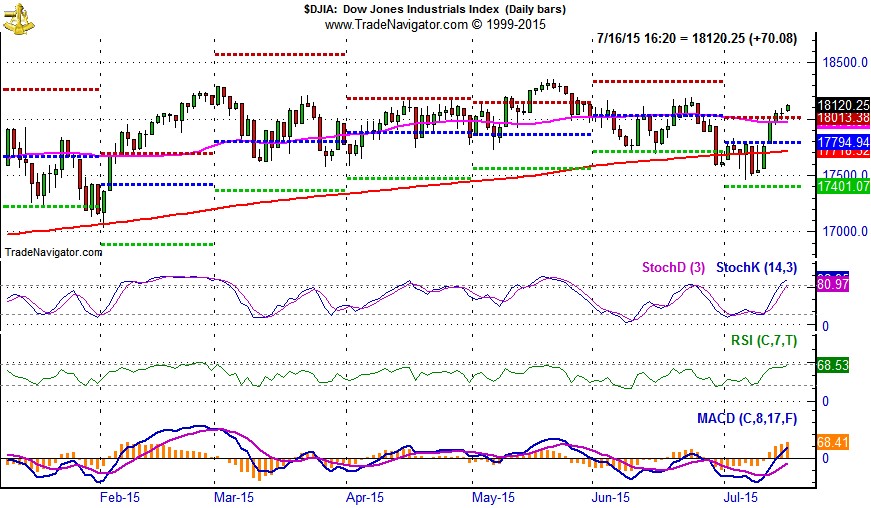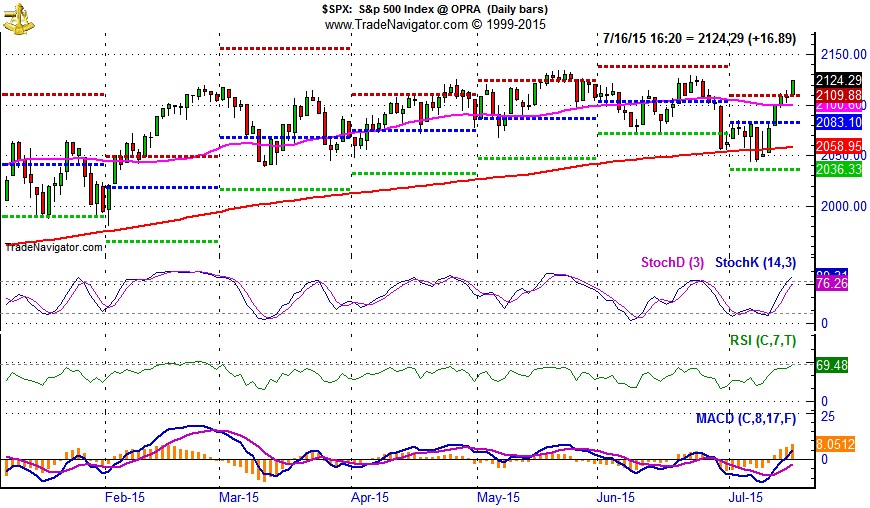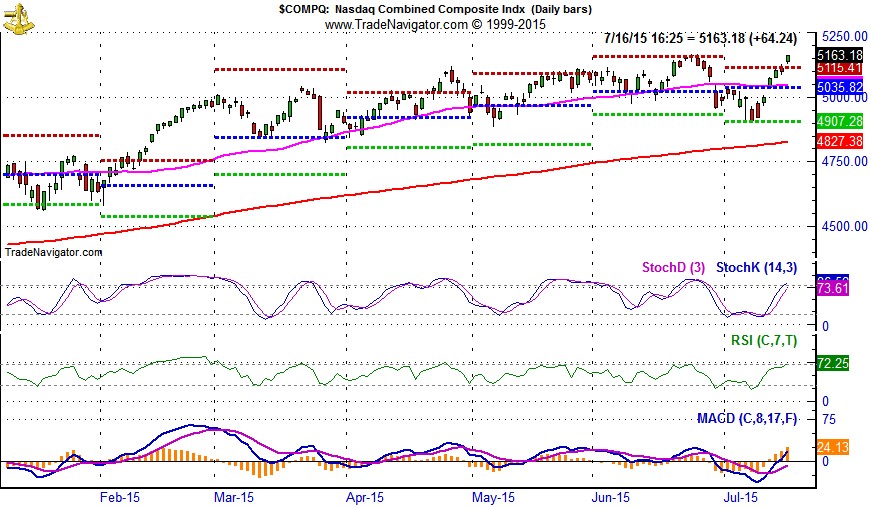|
Mid-Month Market Update: Greece Debacle Distorts Seasonal Forces
|
|
By:
Christopher Mistal
|
July 16, 2015
|
|
|
|
Greece’s latest debt crisis appears to have come to an end as terms for another bailout have finally been hammered out. The effects of missed deadlines and hardline politics ahead of the latest deal were the extension of typical end-of-Q2 market weakness into the start of July and the delayed arrival of NASDAQ’s 12-day mid-summer rally. “Christmas in July” usually runs from the third-to-last trading day in June through the ninth trading day of July for NASDAQ. Thanks to the current brisk rally that began on July 9, this year’s 12-day span suffered only a modest 0.1% loss, the first decline in six years. However, as of yesterday’s close NASDAQ is up 2.2% this July; and even more today.
![[NASDAQ Mid-Summer Rally]](/UploadedImage/AIN_0815_20150716_NASDAQ_Summer_Rally.jpg)
The market may not be staying exactly on seasonal course, but it has been respectably close even with the influence of Greece. There was a late-June selloff followed by a brisk first-half July rally. The sharp market reversal has lifted the major indices back above their respective 200-day (solid red line) and 50-day moving averages (solid magenta line) and even up through projected monthly resistance (red dashed lines). Stochastic, relative strength and MACD indicators are all confirming the shift in momentum, but are also beginning to show signs of being stretched.



This brisk market rally and the accompanying swing positive by technical indicators is setting up nicely for the
mid-July S&P 500 short trade detailed last week.
SPDR S&P 500 (SPY) has rallied up to and just slightly above monthly resistance at $210.56 resulting in the addition of
ProShares UltraShort S&P 500 (SDS) to the ETF Portfolio on the close on July 14 at $20.08. Based upon this price and our 5% trailing stop rule, the
stop loss on SDS is $19.08.
We are also using this rally to add
short stock ideas to the Stock Portfolio presented on July 2. For now we continue to stick to the game plan for the “Worst Six Months.” Hold on to winners, limit new longs, protect gains with tighter stop losses and consider some defensive trades such as bond ETFs and outright short positions. Spending the summer in cash awaiting the next seasonal buying opportunity later this year is also a great way to avoid market volatility.